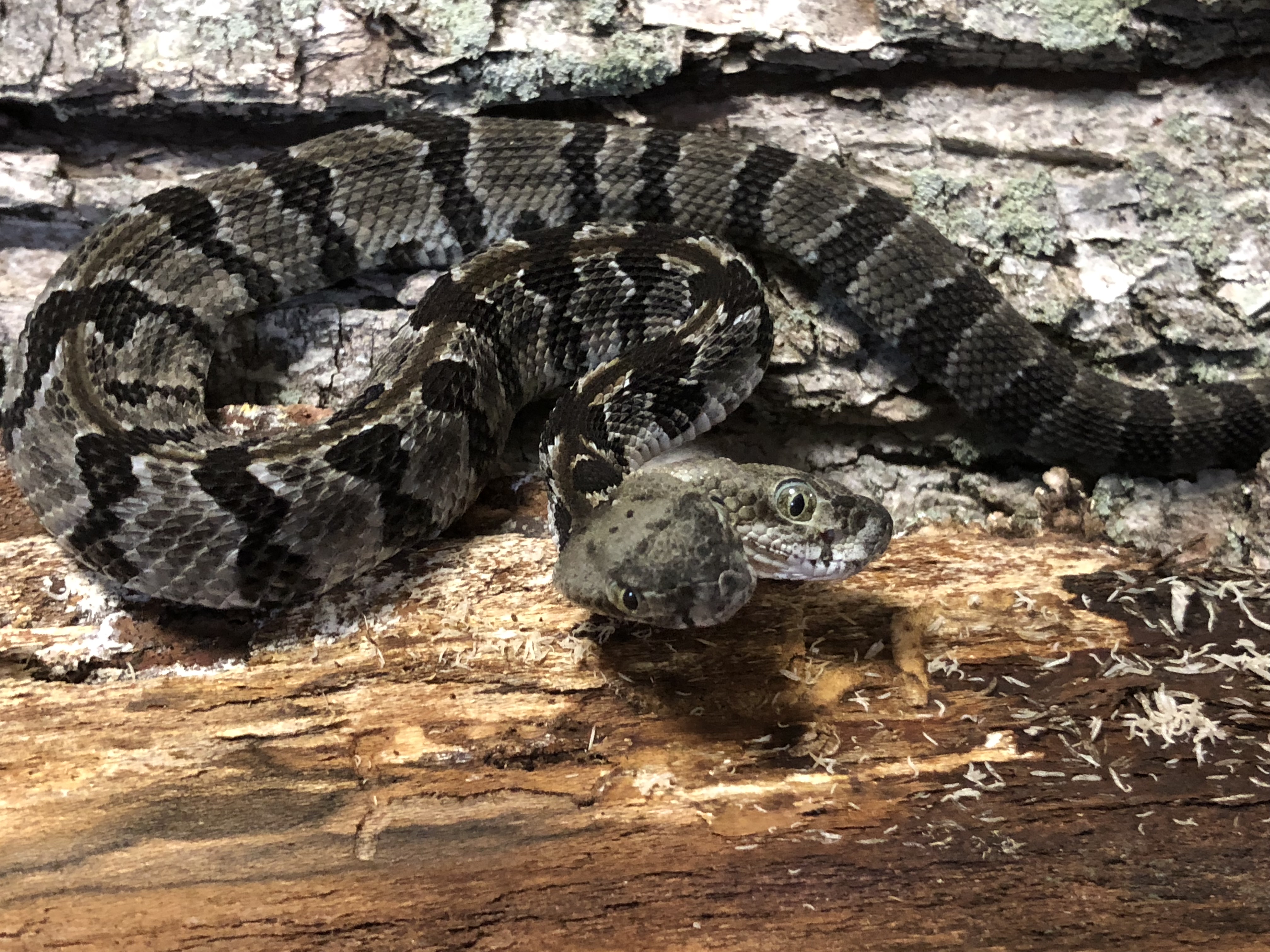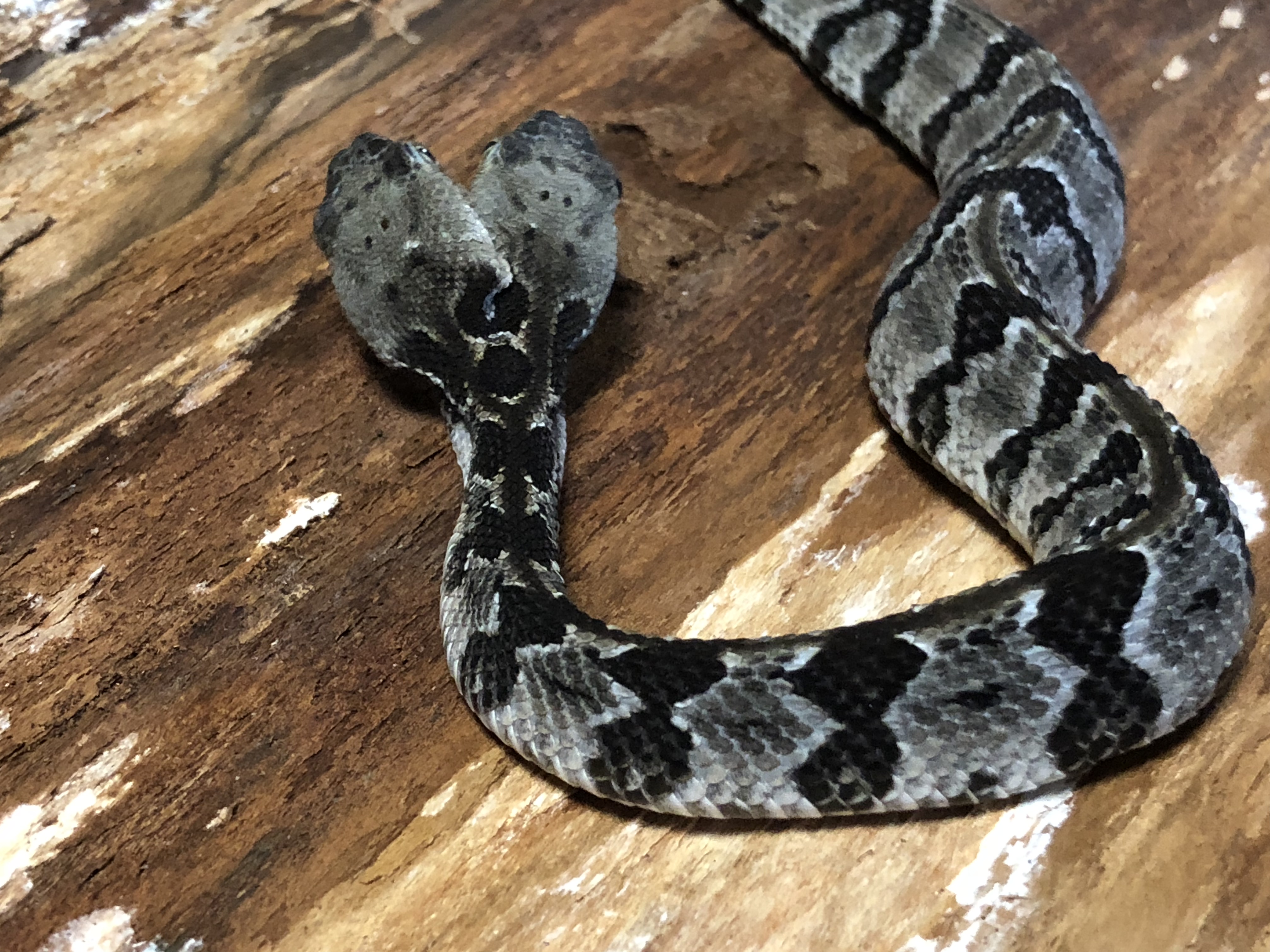Rare, Two-Headed Rattlesnake Named 'Double Dave' Rescued from Certain Doom in New Jersey
Four eyes, two tongues, can't lose.

Two herpetologists in New Jersey — both named Dave — have discovered a rare, two-headed snake, which they've named Double-Dave. Members of the Nobel Prize committee: The ball is in your court.
Double-Dave is a baby rattlesnake, just a few weeks old and about 9 inches (23 centimeters) long, according to a recent segment on ABC News. Herpetologists Dave Schneider and Dave Burkett, who work with the Herpetological Associates in Pemberton, New Jersey, found the critter a few weeks ago while surveying the nearby Pine Barrens — a heavily forested area stretching across the southern tip of the state.
With two independent heads and one shared body, bicephalic animals like D-D rarely survive to maturity in the wild; decisions as simple as whether to slither left or right, or which head gets to eat first, suddenly become staggering battles of will, leaving bicephalic animals especially vulnerable to predators. Knowing this, the Daves decided to take the young snake back to their office, where they've been feeding and caring for it for several weeks.
So far, it seems, Double-Dave is getting along with himself in his new home.

Related: The 10 Weirdest Medical Cases in the Animal Kingdom
"It appears the head on the right side is the more dominant one," Schneider told ABC News. "But every once in a while, the other head will want to go in a different direction."
Double-Dave appears healthy, though Schneider and his colleagues hope to X-ray the creature soon to find out if it has a fully formed digestive system.
Sign up for the Live Science daily newsletter now
Get the world’s most fascinating discoveries delivered straight to your inbox.
While living examples of bicephalic animals like Double-Dave are rare, two-headed creatures are born more often than you might think. Last September, a two-headed viper was found slithering around a residential garden in Virginia; X-rays revealed the creature had two tracheas and two esophagi leading to a shared heart and set of lungs.
Before that, a two-headed deer was found dead in the Minnesota backwoods, and a two-headed porpoise was hauled up from the North Sea in 2017. Bicephalic animals have even crossed the frontier into space: Last year, a flatworm — a species of worm that can regrow into complete individuals after being cut into pieces — grew a second head on its butt while riding aboard the International Space Station.
- The 10 Strangest Animal Discoveries
- In Images: Hungry Python Eats Porcupine Whole
- 13 Extremely Weird Animal Feet
Originally published on Live Science.

Brandon is the space/physics editor at Live Science. His writing has appeared in The Washington Post, Reader's Digest, CBS.com, the Richard Dawkins Foundation website and other outlets. He holds a bachelor's degree in creative writing from the University of Arizona, with minors in journalism and media arts. He enjoys writing most about space, geoscience and the mysteries of the universe.










